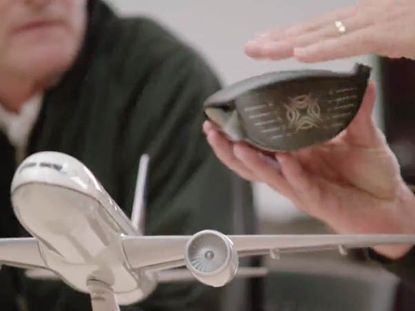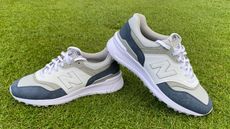Tech Talk: Callaway XR 16 driver
We speak to Dr. Alan Hocknell about the new technology in the Callaway XR 16 driver and how the collaboration with Boeing helped them push the boundaries of design


We speak to Dr. Alan Hocknell about the new technology in the Callaway XR 16 driver and how the collaboration with Boeing helped them push the boundaries of design
Callaway broke the shackles when it came to designing the new XR 16 driver. While the brand’s R&D team is as knowledgable as any other, they wanted to gain insight from experts in other fields in order to create the best product they could.
That’s why they sought the help of aerodynamics experts Boeing in designing the new XR 16 driver. Familiar with drag and wind tunnel testing, their input was invaluable in making the driver as efficient as it could be.
“On this project we had to think outside the box and come up with new techniques to break the common mould of driver design,” Dr. Alan Hocknell, Vice President of Callaway R&D, told GM.
“We needed some new aerodynamic science, moving on from XR. It represented the perfect opportunity to validate what we had been doing already and then take it to the next level.”
Another key man behind the design of the new Callaway XR 16 driver is Jeffrey Crouch, Senior Technical Fellow of Flight Sciences for Boeing. He set up the team that tested and developed the new driver into achieving the aerodynamic gains we see on the final product.
“Reducing drag and controlling the flow to achieve the most efficient aerodynamic performance is a critical part of airplane design,” Crouch told GM. “Those same principles applied to this project with Callaway. The speed and size of the golf club are more like a wind-tunnel model than a full-scale airplane, so wind-tunnel test techniques are also helpful.”
Get the Golf Monthly Newsletter
Subscribe to the Golf Monthly newsletter to stay up to date with all the latest tour news, equipment news, reviews, head-to-heads and buyer’s guides from our team of experienced experts.
“One of the things I work on at Boeing is laminar flow control, which seeks to delay turbulence and increase the amount of laminar flow on aerodynamic surfaces. This reduces airplane drag and leads to reduced fuel consumption and lower emissions.”
“For driver design, because of its bluff shape we wanted to trigger turbulence in order to reduce drag. In this case, the goal was increased head speed, which translates to more distance on the golf course.”

Joel has worked in the golf industry for over 12 years covering both instruction and more recently equipment. He now oversees all product content here at Golf Monthly, managing a team of talented and passionate writers and presenters in delivering the most thorough and accurate reviews, buying advice, comparisons and deals to help the reader find exactly what they are looking for. So whether it's the latest driver, irons, putter or laser rangefinder, Joel has his finger on the pulse keeping up to date with the latest releases in golf. He is also responsible for all content on irons and golf tech, including distance measuring devices and launch monitors.
One of his career highlights came when covering the 2012 Masters he got to play the sacred Augusta National course on the Monday after the tournament concluded, shooting a respectable 86 with just one par and four birdies. To date, his best ever round of golf is a 5-under 67 back in 2011. He currently plays his golf at Burghley Park Golf Club in Stamford, Lincs, with a handicap index of 3.2.
Joel's current What's In The Bag?
Driver: Titleist TSR3, 9°
Fairway wood: Titleist TSR3, 15°
Hybrid: Titleist TSi2, 18°
Irons: Ping i230 4-UW
Wedges: Titleist Vokey SM8, 54°. Titleist Vokey SM9 60° lob wedge, K Grind
Putter: Evnroll ER2V
Ball: 2023 Titleist Pro V1x
-
 'Gator Netting Is In Place' - Chevron Championship Venue Prepared For 'Safe' Winner's Jump
'Gator Netting Is In Place' - Chevron Championship Venue Prepared For 'Safe' Winner's JumpA tradition which began at the tournament's previous home could continue this year - if the champion is feeling brave enough...
By Jonny Leighfield Published
-
 New Balance 997 SL Golf Shoe Review
New Balance 997 SL Golf Shoe ReviewNew Balance produce some extremely stylish footwear and, in this review, Matt Cradock takes their spikeless 997 SL onto the course
By Matt Cradock Published